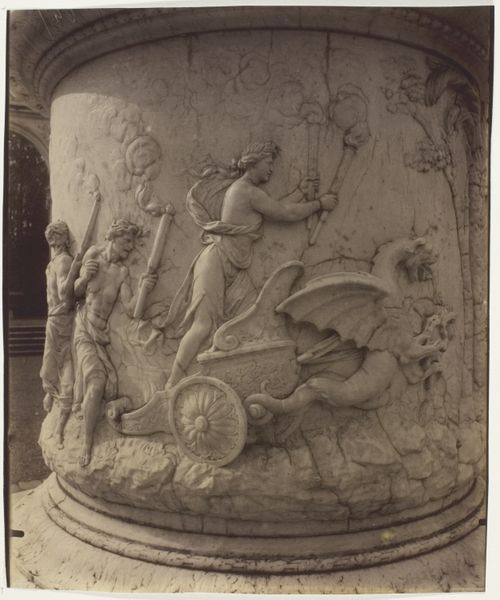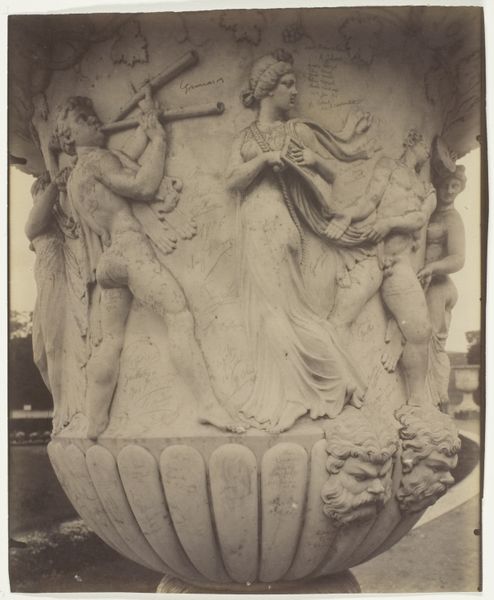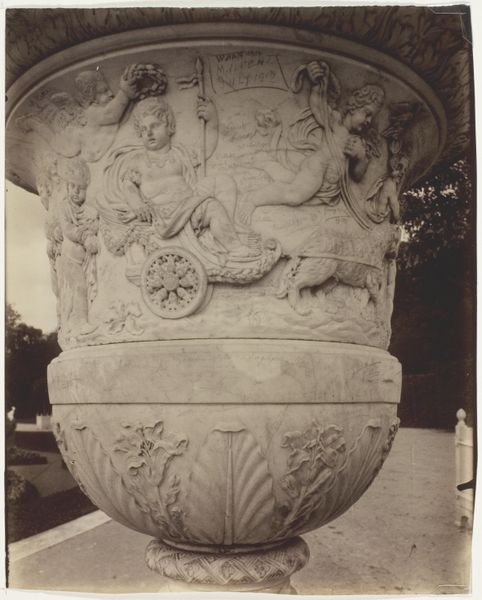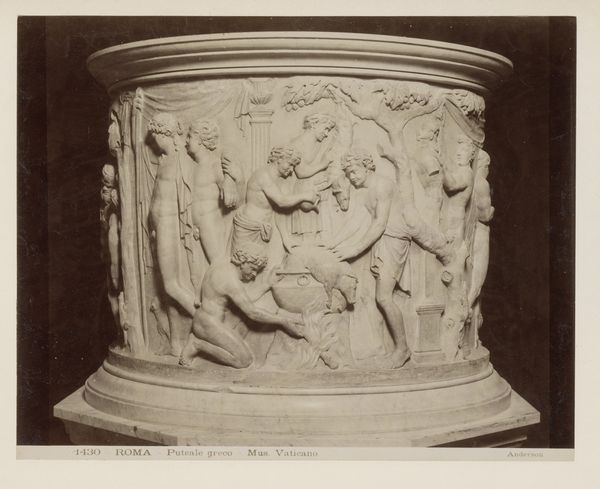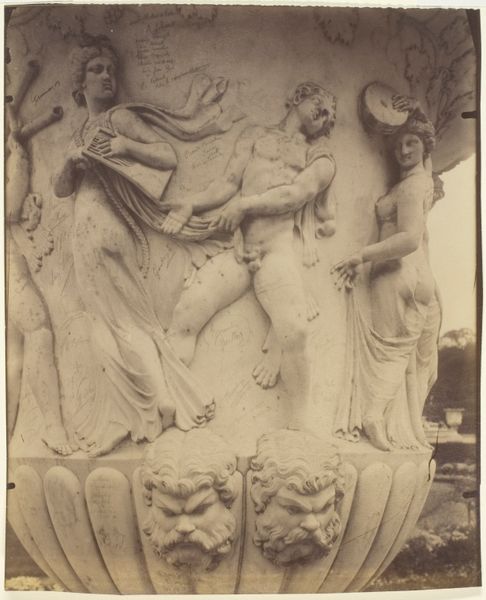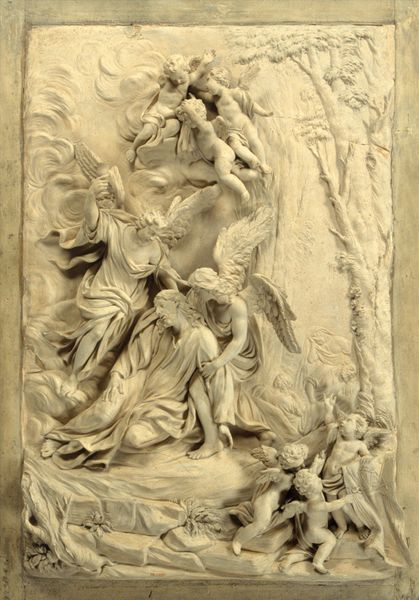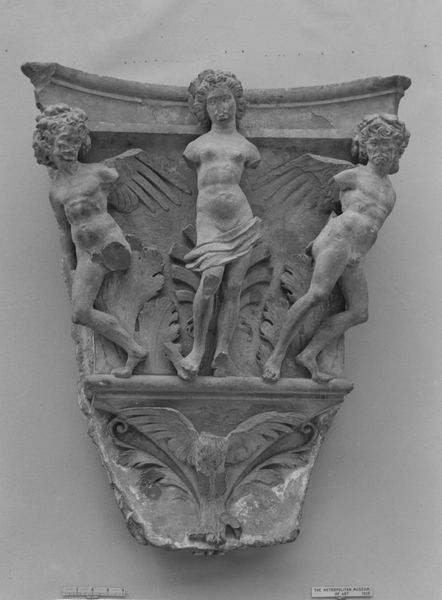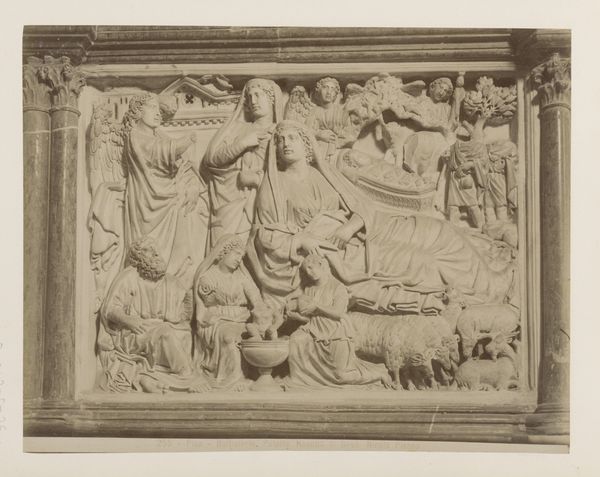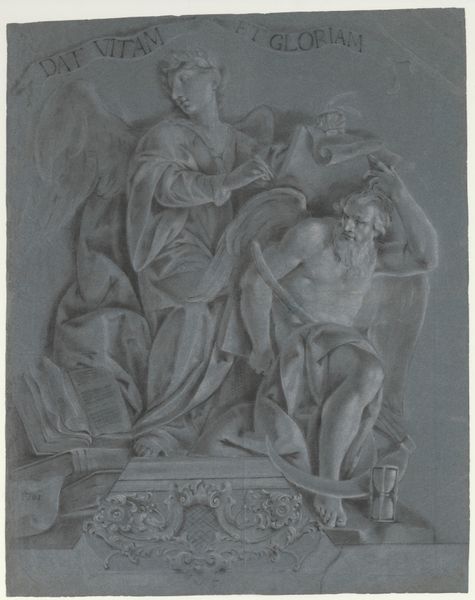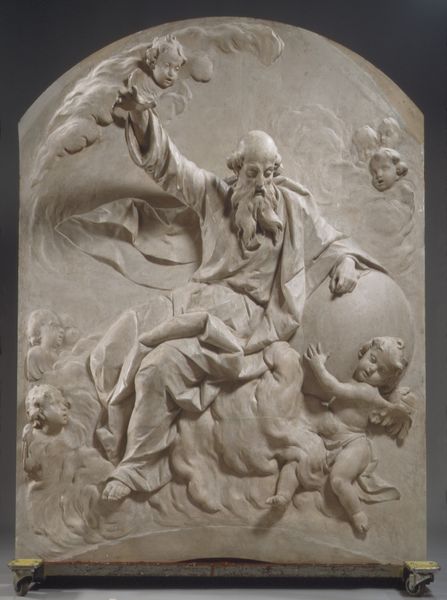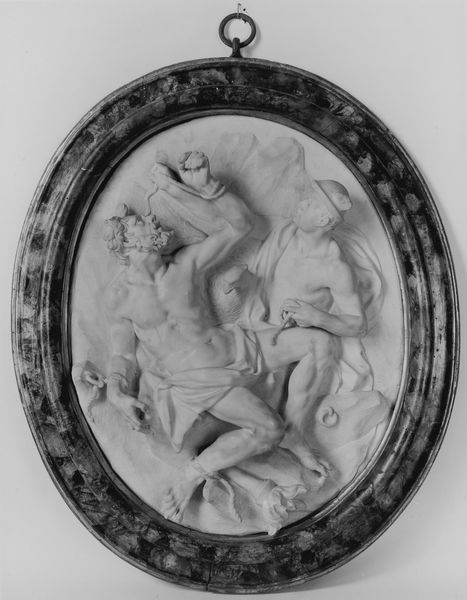
Versailles, Girardon, Enlevement de Proserpine par Pluton 1904
0:00
0:00
Dimensions: 21.8 × 17.6 cm (image); 21.8 × 17.9 cm (paper)
Copyright: Public Domain
Editor: Here we have Eugène Atget's photograph, "Versailles, Girardon, Enlevement de Proserpine par Pluton," taken in 1904. It depicts a baroque sculptural relief, and the composition seems dominated by swirling figures. It has a strange feel with the sepia tones of the print against the pristine white marble sculpture, almost theatrical. How would you interpret this work and its place in art history? Curator: Well, seeing Atget's photograph as purely documentary would be limiting. Considering the period, 1904, when the aesthetic and the very role of photography was being debated in relation to painting and sculpture, is critical. The photograph, mass-produced, challenges the elitism associated with high art. We must think about how photographing Versailles and its sculptures makes these symbols of power accessible to the public, almost democratizing the visual landscape. What statement is Atget making by photographing an existing artwork rather than creating an original one? Editor: That's a good question, maybe it is the beginning of mechanical reproduction? The idea of art being something not everyone could access is pretty crazy. Curator: Precisely. Also consider how Atget frames Girardon’s baroque sculpture. Is he admiring the baroque aesthetic? Does he find something ironic in displaying it for a modern audience, in an era defined by photography’s potential for realism and its ability to capture or reshape history itself? Editor: So, this is a conversation, not just a photo. Curator: Absolutely! By capturing this specific sculpture, Atget participates in the ongoing discussion about art's role in shaping collective memory and social narratives. How does this change your initial impression of the photograph now? Editor: It makes me appreciate it as more than a relic. It shows the revolution and redistribution of art that has continued into modern day with the internet. It now has so many layers of historical and social context that enrich it!
Comments
No comments
Be the first to comment and join the conversation on the ultimate creative platform.
